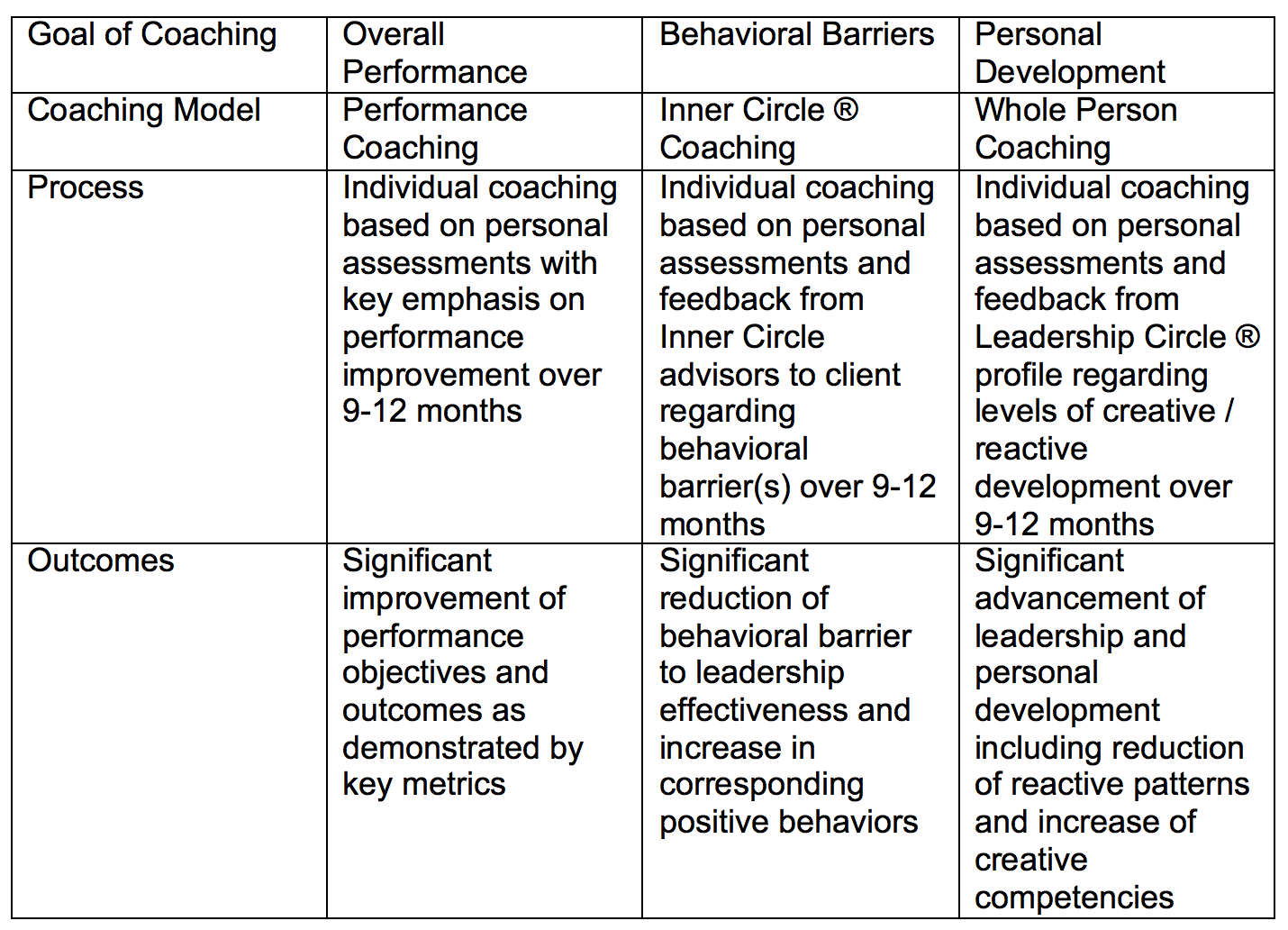Whole Person Leadership Coaching
Coaching, in general, is the activity of leading, directing, training, or guiding others in the execution of some activity, sport, skill, or improvement. In the business and organizational world, executive coaching is a broad term that refers to a variety of relationships or partnerships that involve one person, the coach, helping, leading, or guiding, another person, the client, toward the achievement of individual, team, or organizational goals. There are typically three main stakeholders: the coach, the client, and the organization which most often funds the process. Executive or leadership coaching is usually aimed at one of the following:
- To improve a leader’s performance in specific areas of organizational need (performance coaching)
- To lessen the impact of a behavioral barrier to leader effectiveness (behavioral coaching)
- To develop the overall effectiveness and development of the leader (developmental coaching)
At Price Associates, our team provides coaching at all three levels listed above as depicted in the table below.

Any of these coaching methods can be applicable in various organizational and situational contexts in which the leader finds him or herself. Whole-person coaching aims primarily at the last category of developmental coaching. While behavioral changes will typically result and performance will typically improve, these gains are secondary following the primary gain in increased development of the leader overall. This focus on the internal operating system operative in the leader is a unique aspect of Whole Person Coaching. This is built on the proven premise that the “inner game runs the outer game” (Anderson, & Adams, 2016).
It has been demonstrated that approximately 75 percent of leaders are operating from a leadership style that is more reactive than creative. Further, research data gathered from the Leadership Circle assessment demonstrates that leaders operating at this level have reduced effectiveness. Therefore, moving leadership from reactive to creative has a significant effect on the leadership of the coaching client.
Oftentimes, coaching is conceived through an extrinsic lens as opposed to the intrinsic nature of counseling. Coaching is not therapy, nor is it aimed at therapeutic ends of personal symptom reduction. When coaching is performed by a coach with a prior background in counseling, however, the insights from a counseling perspective can greatly deepen the coaching process. Whole Person Coaching is a unique approach to the executive coaching of leaders. It is dialectical in that it focuses on both sides of the equation, the yang of coaching consisting in performance, goal achievement, bottom-line focused, hard or practical things, and the yin of coaching (overlap to counseling), consisting in personal development, softer and more personal things. This holistic approach to leader coaching and development is what I call Whole Person Coaching.
A leader only has one self that he or she brings to work and that exists and lives outside of the office. There are not two selves, the one we should leave at home, and the work self, the one we are at work. In this way, the idea of work-life separation is a myth. Life and people aren’t built like that. We are each one person and we each bring that one person into all spheres of our existence. The hard stuff and the soft stuff are interconnected. This is the brilliance of a dialectical approach like Whole Person Coaching. It focuses on both.
To work at this level, whole-person coaching integrates individual assessment data from clients in six key areas:
- Behavioral Style (DISC): This is the pattern of observable behavioral tendencies, how the leader tends to behave.
- Driving Forces (Motivators): This is the pattern of drive or motivation, why the leader chases some carrots and not others.
- Workplace Competencies: These are the current levels of developed skill in 25 important areas of skill-development, what the leader has mastered.
- Acumen Capacity: This is the pattern of unconscious thinking in relation to the world and the self that is operative in the leader, how they see both.
- Emotional Intelligence: This is the level of developed skill in effectively managing emotionality, how well the leader is able to deal with their own and others’ emotions.
- Creative / Reactive Levels of Adult Development: This is the level of developed creative leadership competencies compared to the level of reactive leadership tendencies, how well-developed the leader is as measured by The Leadership Circle.
Moving from the outside-in, client understanding of self, talent patterns, skills, and levels of development begins with easier aspects of self to understand and moves over time toward more complex, subtle or invisible aspects of self that are most often driving the leadership of the client with or without their knowledge. By identifying these hidden patterns of developmental deficiency, clients are able to clearly identify holistic developmental goals that will radically transform their leadership at the core of their identity. Deep change most often occurs from the inside-out. By going deeper into the core of the client identity, Whole Person Coaching, provides a catalyst for radical second-order change in leaders.
References:
Anderson, R. J., & Adams, W. A. (2016). Mastering Leadership: An Integrated Framework for Breakthrough Performance and Extraordinary Business Results. Hoboken, NJ: Wiley & Sons, Inc.


